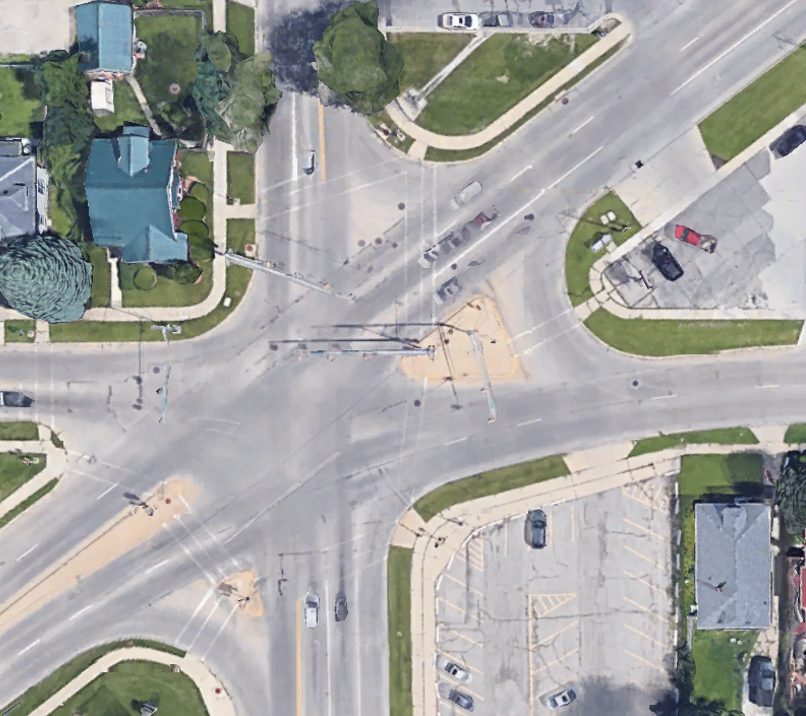Church Row Neighborhood: Sustainable and Equitable Transportation
Combined with the effort to create the Church Row neighborhood plan, a course in the School of Planning & Public Affairs assessed the walkability and accessibility of the Church Row neighborhood, particularly focusing issues of equity that include safety, access to employment and basic needs services, public transportation, parks and open space, and more.
The Church Row Neighborhood is located southwest of downtown Waterloo Iowa, across the Cedar River and just south of John Deere’s Waterloo Works. The neighborhood, which consists of many historic homes and churches from the turn of the 20th Century, has evolved considerably over the years. The neighborhood is currently home to a sizeable population of racial and ethnic minorities and immigrants.
Though the neighborhood has good proximity to many of the major activity centers and employers in the region, the presence of roadways designed for high volume and/or speed make access to these amenities difficult. The neighborhood is bounded by US Highway 63 and 218 from northwest and northeast and arterial one-way streets (5th Avenue and 6th Avenue) on the east and southeast. The heart of the neighborhood is almost exclusively residential, requiring residents to traverse these highways to access local shops, jobs and schools. In addition, though public transportation is provided in the neighborhood, the most easily accessible routes serve a limited number of destinations.
These conditions mean that although residents tend to have low household incomes, they are also heavily reliant on private cars to access work and daily necessities.
The problem of low-income residents’ mobility being constrained by high volume roadways is not unique to Church Row or Waterloo. It is a common problem in cities across the United States. These factors have several negative effects on these neighborhoods, including limiting the usefulness of physically active transportation and inexpensive modes such as walking and cycling, even in a neighborhood whose design otherwise encourages these things. It also exposes residents to higher risk of being involved in crashes, even as motorists. Additionally, streets designed almost exclusively to handle large volumes of traffic adjacent to commercial spaces limit the use and vibrancy of these spaces, potentially stunting economic development in the area.
This plan examines transportation improvements that can improve the quality of life for residents in the Church Row Neighborhood. In particular, it focuses on the needs of the people who live along and use the neighborhood’s streets every day and provides recommendations to equitably balance the needs and safety of residents with those of regional traffic. By rebalancing the transportation environment in Church Row, the hope is to achieve a more sustainable and equitable neighborhood from a social, economic, and environmental standpoint.
